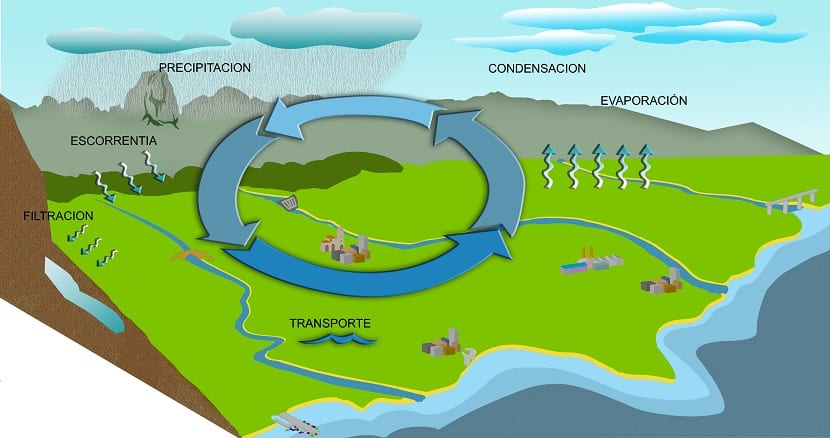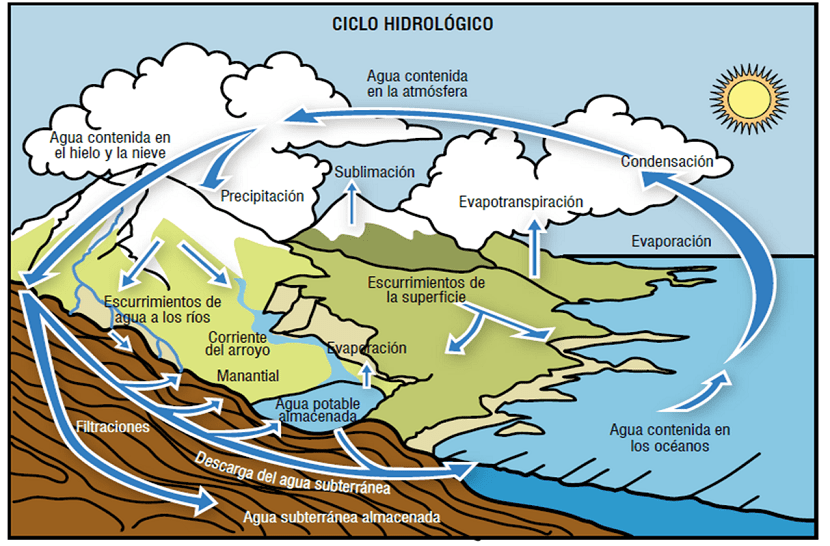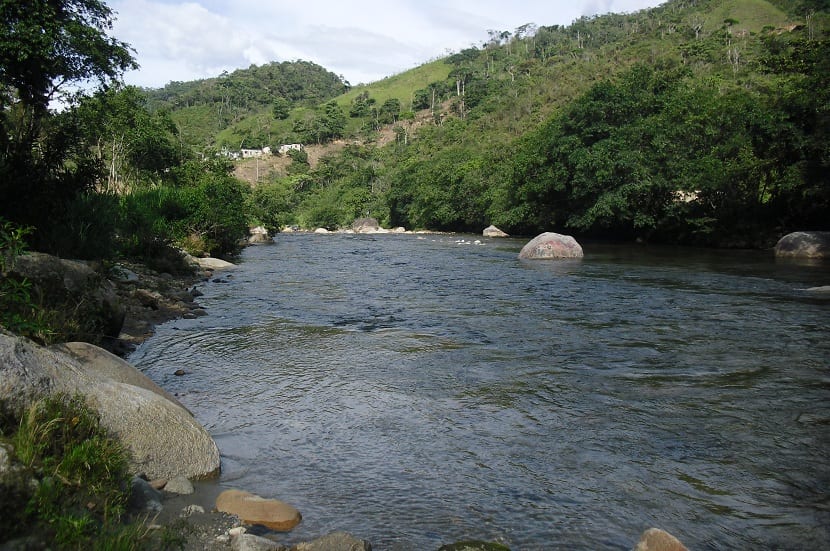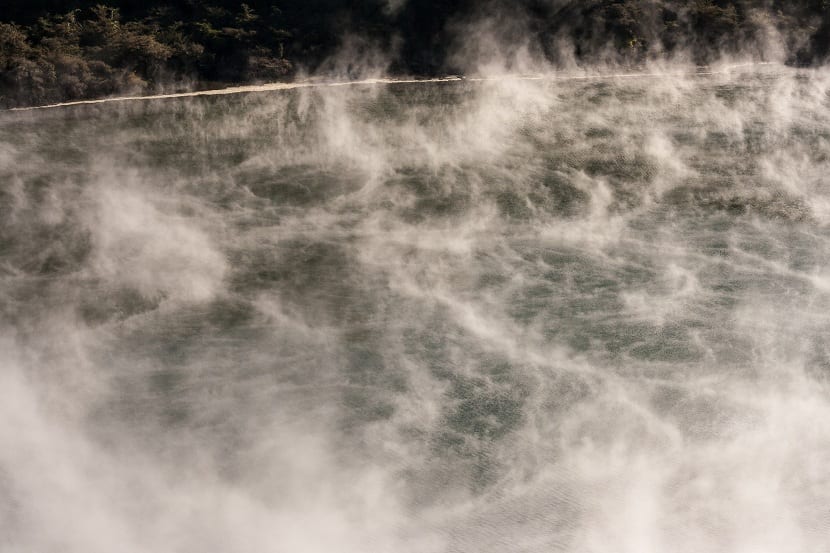
Surely you know what the water cycle is, also known as hydrological cycle. It is about the continuous and cyclical movement that water has throughout our planet. From the beginning until the end of the cycle, water can go through all three states: liquid, solid and gas. The process by which a drop of water begins the cycle and ends it can last between seconds or minutes to even millions of years.
Do you want to know the hydrological cycle in depth? In this article you will learn all about it.
How the water cycle works

Water has a balance on Earth. There is always the same amount of water, but in different places and conditions. In general, the hydrological balance is usually constant although the water molecules can circulate quite quickly.
It is the Sun that begins to direct and move the water cycle heating the water of the seas and oceans. When the water evaporates it rises to form clouds. At this time the water is in a gaseous state. Once the right conditions are in place, the precipitation. Depending on the air temperature, precipitation can be in solid form (snow or hail) or in liquid form (raindrops).
Once the water falls to the ground, it can be stored in the form of groundwater, form puddles, marshes, lakes, lagoons or join a surface water stream such as rivers, streams, etc. If this happens, the water is again led to the sea where it will evaporate again through solar radiation until it forms clouds. This is how the hydrological cycle closes.
Processes involved in the hydrological cycle

There are numerous processes that intervene in this water cycle and that through them the water is kept in continuous movement. For example, there are processes by which water evaporates and it does not have to be exactly the evaporation of water from the oceans due to solar radiation.
Rising air currents are also the result of evapotranspiration water It comes from both plants during the photosynthesis process and from soil evaporation.
When water vapor rises in the air, colder temperatures cause it to condense to form clouds around the world. The water particles within a cloud collide with each other to form larger drops. The water droplets need a hygroscopic condensation core to join them and form a larger water droplet. This condensation core can be a speck of sand, for example.

With the continuous accumulation and aggregation of the water droplets, they become larger and heavier until they fall under their own weight. These conditions depend on the cloud type that is in each moment and of the atmospheric conditions. As we have said before, the process by which a drop of water (whatever state it is in) can take even millions of years to complete the cycle is due to the following.
Relative duration of the water cycle

When a drop of water falls from a cloud in solid form such as snow or ice, it can accumulate on the polar caps and mountain glaciers and not evaporate again and go from solid to liquid in millions of years. This water can remain so stored for millions of years if conditions do not change. Thanks to this, scientists can extract a great deal of information from the polar caps by using ice cores.
If the weather is warmer, the ice blocks thaw and melt when spring arrives and temperatures rise. The melt water flows through the land and feeds the valleys and rivers. Most of the precipitation across the globe falls on the oceans. If it does so on land, it can become surface streams, or it can be stored underground as groundwater and feed aquifers. In fact, there is more water that remains accumulated by the infiltration process than the one that flows through rivers and lakes.
If the water remains stored underground, the time it takes for it to rise to the surface by extraction by humans or redirection to a lake and to evaporate again can take up to centuries.
When water infiltrates it needs to be stored in the ground to fill aquifers. These underground water stores are very important for the human population since many cities are supplied solely by them. Some others, however, are capable of staying close to the earth's surface and emerging, ending up as surface and ocean water.
Importance of the water cycle for life

The hydrological cycle is of great importance for life on Earth. Thanks to it, life can proliferate given its properties. It allows organic compounds to react in a way that continues life on the planet. As you surely already know, the human body is made up of 60-70% water, so without it we could not live.
It is also essential for plants to photosynthesize and breathe. To balance the pH of the water and the vital functions of the enzymes, water is a key element. Also, as you can see in the evolution of plants and animals, the earliest life forms arose in water. Almost all fish live exclusively in water and there are a large number of mammals, amphibians and reptiles in it. Some plants such as algae also thrive in aquatic environments, whether in fresh or salt water.
As you can see, water is the most important element on our planet and thanks to it we can have life as we know it today. For this reason, it is necessary to know how to appreciate this valuable resource, but which, unfortunately, is increasingly scarce.